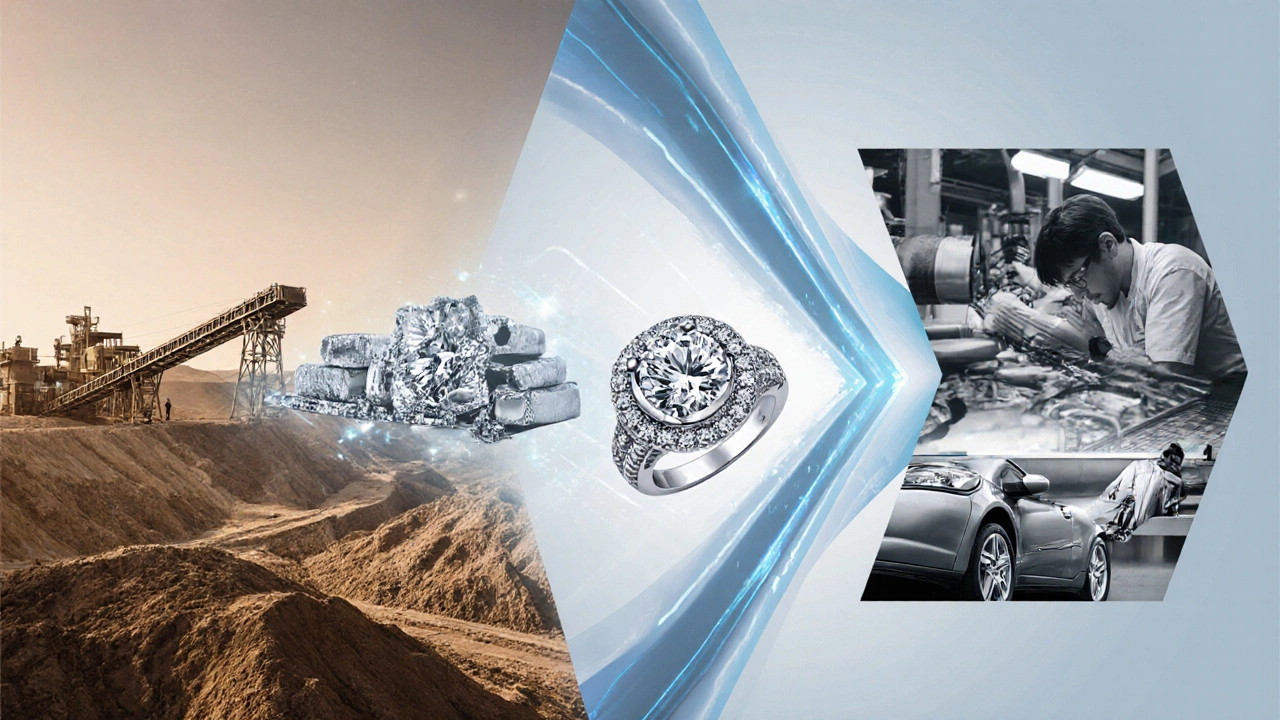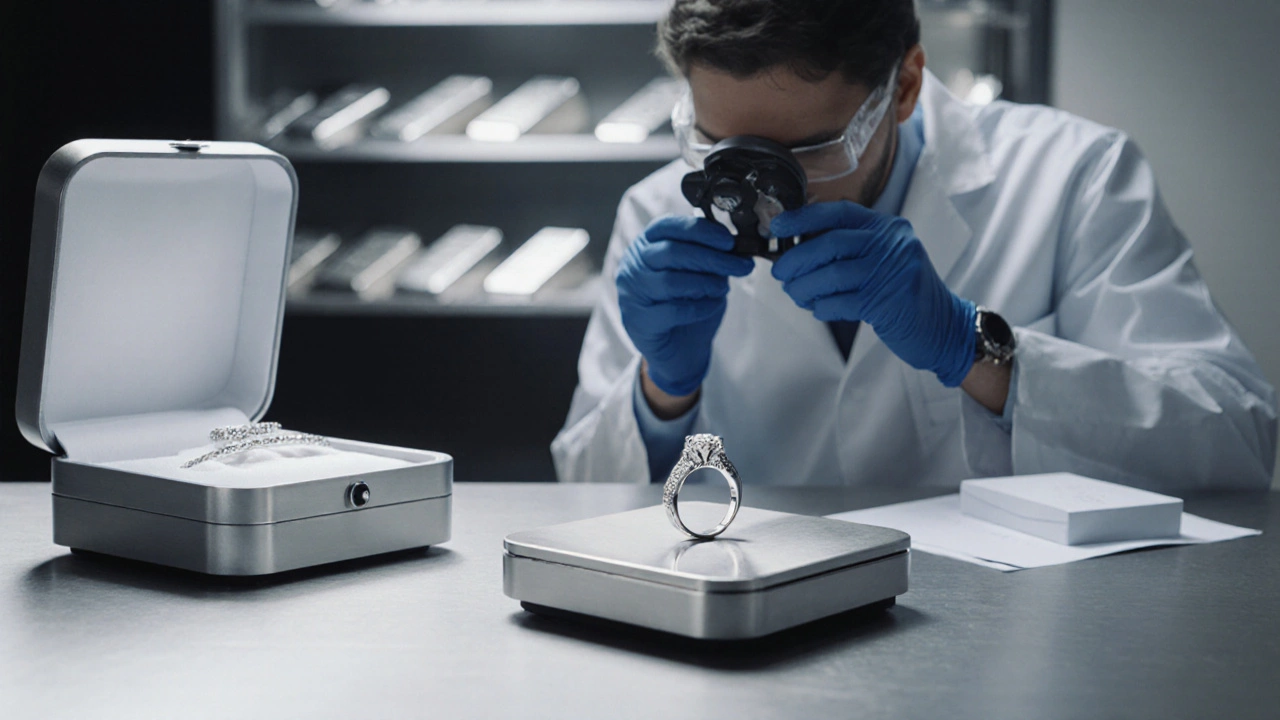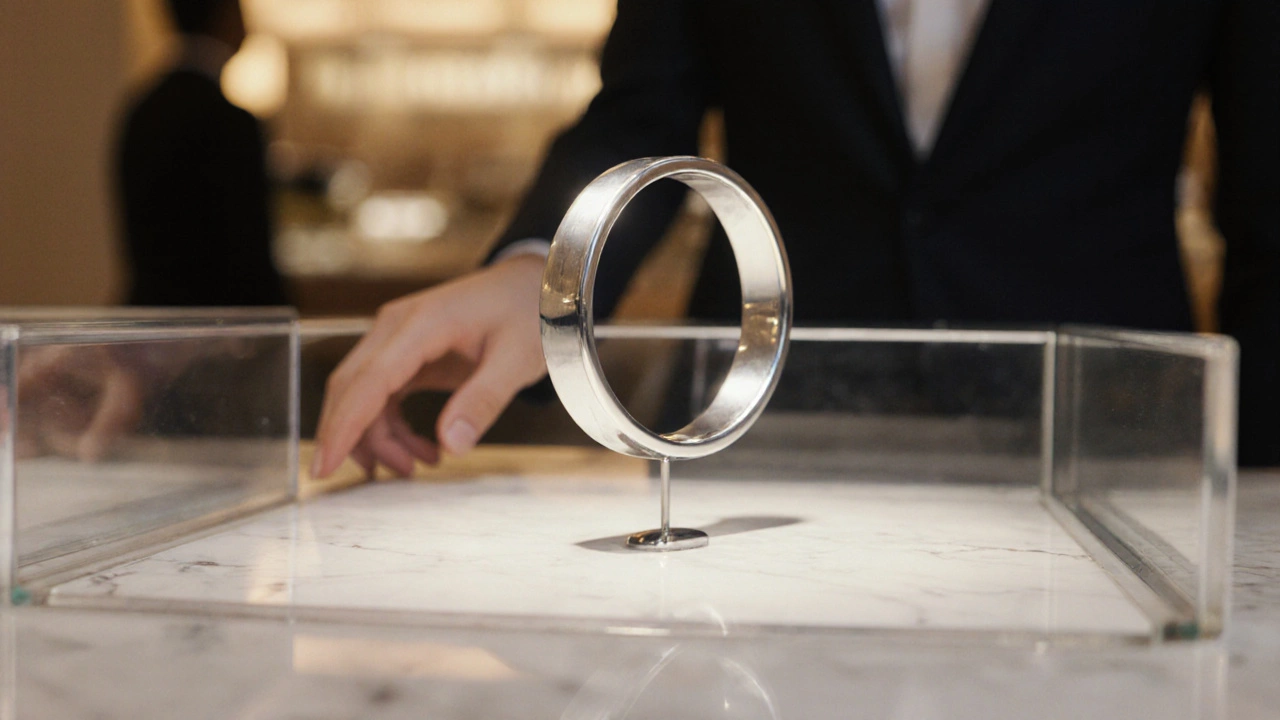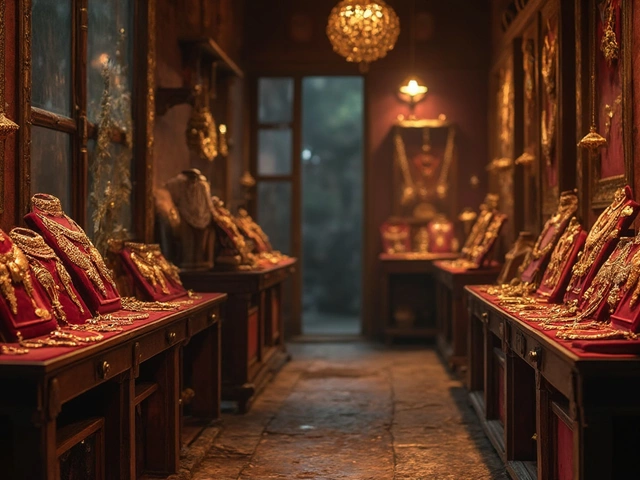Platinum Resale Value Calculator
How Platinum Resale Works
Platinum resale typically returns 55-65% of the current spot price due to refining costs and dealer discounts. Unlike gold, platinum's resale value is heavily influenced by automotive industry demand.
Typically 35-45% (55-65% of spot price)
Enter weight and select discount to see your resale value.
Why This Matters
Real-world impact: A 5-gram platinum ring would sell for about $320-$390 (60% discount), but its retail price was likely $700-$900.
Key factors affecting value:
- Automotive industry demand (40% of platinum used in catalytic converters)
- Current spot price fluctuations
- Condition of your piece
- Documentation and hallmarks
When you walk into a jewelry store and see a sleek platinum band, you might think you’re buying a forever‑lasting investment. Yet the moment you try to sell it, the price you get back often feels like a disappointment. Below we unpack the real reasons behind the weak platinum resale value and what that means for anyone buying or selling platinum pieces.
What Makes Platinum Different?
Platinum is a dense, white precious metal prized for its durability and hypoallergenic nature. It doesn’t tarnish, it’s heavier than gold, and it resists scratches. Those qualities are why designers love it for high‑end rings and why car manufacturers use it in catalytic converters.
But the same traits that make platinum a great material also create hurdles when you try to turn it back into cash.
Supply Side: How Much Platinum Is Actually Available?
Global production of platinum hovers around 180 metric tons per year, with South Africa supplying about 70% of that total. Because mining is concentrated in a few regions, any political unrest or labor strike can cause sudden drops in output. The market reacts by tightening supply, which pushes the spot price up temporarily-but the effect on resale price is muted because the metal’s rarity is already baked into its retail markup.
Demand Side: Who Is Buying Platinum?
Unlike gold, which has a massive consumer base for coins, bars, and jewelry, platinum’s demand is split between three main sectors:
- Jewelry - mostly high‑end wedding and engagement pieces.
- Automotive - catalytic converters for emission control.
- Industrial - chemical processing and electronics.
When the auto industry slows down, a significant chunk of demand evaporates, leaving a surplus that depresses resale prices.
Why the Retail Markup Doesn’t Translate to Resale
When you buy a platinum ring, the price includes several components:
- Raw metal cost (the spot price).
- Design and craftsmanship fees.
- Retail overhead - rent, staff, marketing.
- Profit margin for the jeweler.
When you later sell the piece, the buyer (often a pawnshop or second‑hand dealer) only cares about the first two items. They subtract a re‑refining cost, which can be 5‑10% of the metal’s weight, and then apply a discount of 15‑30% to cover their own risk. The result is a resale figure that looks a lot lower than the original sticker price.
Spot Price vs. Resale Price - The Numbers
To see the gap in action, compare the current spot price of platinum with typical resale offers:
| Metal | Spot Price (USD/oz) | Typical Resale % of Spot | Common Uses |
|---|---|---|---|
| Platinum | 1,070 | 55‑65% | Jewelry, catalytic converters |
| Gold | 1,950 | 70‑85% | Coins, bars, jewelry |
| Silver | 24 | 75‑90% | Industrial, coins, jewelry |
| Palladium | 1,200 | 50‑60% | Catalytic converters, electronics |
The table shows that gold consistently fetches a higher share of its spot price. Platinum lags behind because its market is less liquid and the resale network is smaller.
Key Players That Influence Resale Value
London Bullion Market Association (LBMA) sets the global benchmark for platinum prices. While LBMA regulates the spot price, it doesn’t govern how second‑hand dealers price the metal. Those dealers look at local demand, inventory levels, and the cost of re‑melting.
Another factor is the spot price - the current market price for one ounce of the metal. Spot prices swing daily based on macro‑economic news, mining reports, and even currency fluctuations. Dealers use an average of the past few days’ spot prices to smooth out volatility, which can further widen the gap between what you paid and what you receive.

How Car Catalysts Impact the Market
About 40% of the world’s platinum ends up in automotive catalytic converters. When stricter emission standards are introduced, demand spikes. Conversely, a shift toward electric vehicles reduces the need for new converters, leaving more old platinum to be recycled. This recycling flow adds supply without the cost of mining, putting downward pressure on resale values.
Is Platinum a Good Investment?
Many buyers treat platinum like a hedge against inflation, but the data tells a mixed story. Over the past 10 years, platinum’s total return (including price appreciation and a modest dividend from mining stocks) lagged behind gold by roughly 2‑3% per year. The metal’s high volatility also means you could see sharp drops in a short period.
If you’re looking for a pure store of value, gold remains the safer bet. Platinum can still be a worthwhile purchase if you love the look and the durability, but you should treat it as a fashion expense rather than a financial asset.
Tips to Maximize What You Get Back
Even though resale numbers are lower, you can still improve your return by following a few simple steps:
- Buy from reputable jewelers. They provide proper hallmarks that make verification easier for second‑hand buyers.
- Keep the piece in its original box with certificates. Documentation speeds up appraisal and can add a few percentage points.
- Maintain the metal’s condition. Scratches or dents require re‑polishing, which the dealer deducts from the payout.
- Time your sale. Resale percentages tend to rise when spot prices are on an upward trend and when demand from the automotive sector is strong.
- Consider selling to a specialized precious‑metal dealer rather than a pawnshop. Specialists often offer better rates because they have refining contracts.
Alternative Ways to Extract Value from Platinum
If you’re not happy with the cash offer, think about these alternatives:
- Trade‑in programs. Some luxury retailers let you swap your platinum piece for a discount on a new item.
- Consignment sales. Listing your jewelry on a reputable online marketplace can fetch closer to retail price, though you pay a commission.
- Donate to charity. Certain nonprofits give tax deductions based on the fair market value, which can be higher than the resale cash you’d get.
Future Outlook - Will Resale Value Improve?
The metal’s outlook hinges on a few macro trends:
- Electrification of transport. If electric vehicles dominate, catalytic‑converter demand may stay low, keeping resale prices depressed.
- Supply constraints. Continued labor issues in South Africa could tighten supply, nudging spot prices up and potentially narrowing the resale gap.
- Investor sentiment. If platinum is marketed more aggressively as an investment asset, newer buyers might accept higher resale percentages.
At the moment, the market snapshot suggests modest resale rates will persist, but a sudden shift in any of the above factors could change the equation.

Why does platinum sell for less than its retail price?
Retail prices include design, labor, and dealer margin. When you resell, the buyer only cares about the raw metal weight and the cost to refine it, so they apply a discount to cover their own expenses.
Is platinum a better investment than gold?
Historically gold has offered higher resale percentages and lower volatility. Platinum can give strong returns when spot prices rise sharply, but overall it’s considered riskier for pure investment purposes.
How does the automotive industry affect platinum resale?
About 40% of platinum is used in catalytic converters. When car production slows or shifts to electric models, less new platinum is needed, which can increase the amount of recycled metal entering the market and push resale offers lower.
Can I get a better price by selling to a specialist?
Yes. Specialist precious‑metal dealers have direct refining contracts and often offer higher percentages than pawnshops or general jewelry stores.
What documentation helps improve resale value?
Original receipts, hallmark certificates, and the jewelry’s box all make verification quicker and can add a few points to the final offer.



